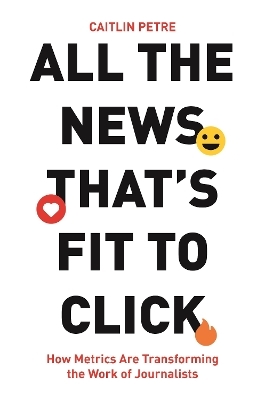
A History of Data Visualization and Graphic Communication
Seiten
2021
Harvard University Press (Verlag)
978-0-674-97523-1 (ISBN)
Harvard University Press (Verlag)
978-0-674-97523-1 (ISBN)
Statistical graphing was born in the seventeenth century as a scientific tool, but it quickly escaped all disciplinary bounds. Today graphics are ubiquitous in daily life. Michael Friendly and Howard Wainer detail the history of data visualization and argue that it has not only helped us solve problems, but it has also changed the way we think.
A comprehensive history of data visualization—its origins, rise, and effects on the ways we think about and solve problems.
With complex information everywhere, graphics have become indispensable to our daily lives. Navigation apps show real-time, interactive traffic data. A color-coded map of exit polls details election balloting down to the county level. Charts communicate stock market trends, government spending, and the dangers of epidemics. A History of Data Visualization and Graphic Communication tells the story of how graphics left the exclusive confines of scientific research and became ubiquitous. As data visualization spread, it changed the way we think.
Michael Friendly and Howard Wainer take us back to the beginnings of graphic communication in the mid-seventeenth century, when the Dutch cartographer Michael Florent van Langren created the first chart of statistical data, which showed estimates of the distance from Rome to Toledo. By 1786 William Playfair had invented the line graph and bar chart to explain trade imports and exports. In the nineteenth century, the “golden age” of data display, graphics found new uses in tracking disease outbreaks and understanding social issues. Friendly and Wainer make the case that the explosion in graphical communication both reinforced and was advanced by a cognitive revolution: visual thinking. Across disciplines, people realized that information could be conveyed more effectively by visual displays than by words or tables of numbers.
Through stories and illustrations, A History of Data Visualization and Graphic Communication details the 400-year evolution of an intellectual framework that has become essential to both science and society at large.
A comprehensive history of data visualization—its origins, rise, and effects on the ways we think about and solve problems.
With complex information everywhere, graphics have become indispensable to our daily lives. Navigation apps show real-time, interactive traffic data. A color-coded map of exit polls details election balloting down to the county level. Charts communicate stock market trends, government spending, and the dangers of epidemics. A History of Data Visualization and Graphic Communication tells the story of how graphics left the exclusive confines of scientific research and became ubiquitous. As data visualization spread, it changed the way we think.
Michael Friendly and Howard Wainer take us back to the beginnings of graphic communication in the mid-seventeenth century, when the Dutch cartographer Michael Florent van Langren created the first chart of statistical data, which showed estimates of the distance from Rome to Toledo. By 1786 William Playfair had invented the line graph and bar chart to explain trade imports and exports. In the nineteenth century, the “golden age” of data display, graphics found new uses in tracking disease outbreaks and understanding social issues. Friendly and Wainer make the case that the explosion in graphical communication both reinforced and was advanced by a cognitive revolution: visual thinking. Across disciplines, people realized that information could be conveyed more effectively by visual displays than by words or tables of numbers.
Through stories and illustrations, A History of Data Visualization and Graphic Communication details the 400-year evolution of an intellectual framework that has become essential to both science and society at large.
Michael Friendly is Professor of Psychology, founding chair of the Quantitative Methods area, and coordinator of the Statistical Consulting Service at York University. He is a fellow of the American Statistical Association. Howard Wainer has been a columnist for the statistical magazine Chance since 1990. A fellow of the American Statistical Association and the American Educational Research Association, he has been honored with the Psychometric Society’s Lifetime Achievement Award and the 2021 ASA Statistical Computing and Graphics Award.
| Erscheinungsdatum | 31.08.2021 |
|---|---|
| Zusatzinfo | 70 photos, 18 color photos, 36 illus., 4 color illus., 5 tables |
| Verlagsort | Cambridge, Mass |
| Sprache | englisch |
| Maße | 156 x 235 mm |
| Gewicht | 680 g |
| Themenwelt | Mathematik / Informatik ► Informatik ► Datenbanken |
| Informatik ► Theorie / Studium ► Algorithmen | |
| Naturwissenschaften | |
| ISBN-10 | 0-674-97523-5 / 0674975235 |
| ISBN-13 | 978-0-674-97523-1 / 9780674975231 |
| Zustand | Neuware |
| Informationen gemäß Produktsicherheitsverordnung (GPSR) | |
| Haben Sie eine Frage zum Produkt? |
Mehr entdecken
aus dem Bereich
aus dem Bereich
Buch | Softcover (2024)
Lehmanns Media (Verlag)
39,99 €
how metrics are transforming the work of journalists
Buch | Softcover (2024)
Princeton University Press (Verlag)
23,65 €


